

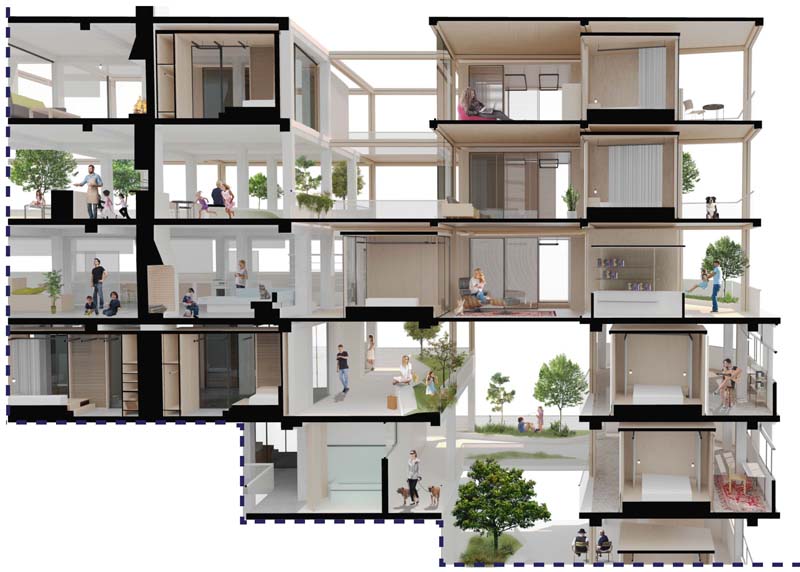

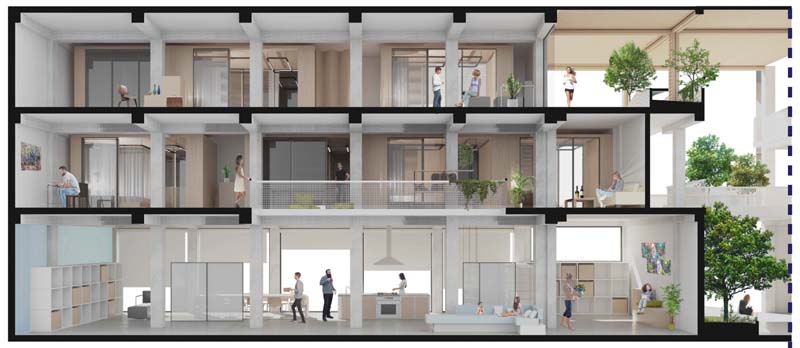

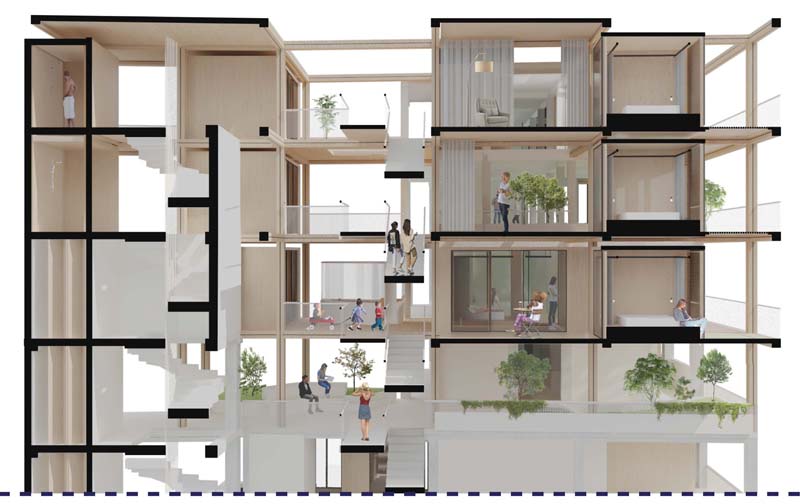



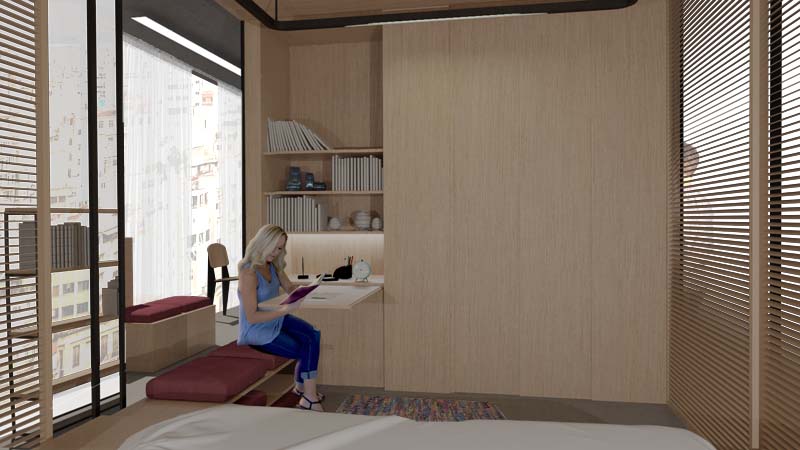

The purpose of this thesis project, is to create an experimental structure of common living, in the center of Athens, using the existent building reserve of the city, in order to redefine the housing status as we know it.
The starting point of the project, was the study of the identity of the modern day resident of the post-modern city, as well as the ever changing relations that influence the urban living. In another level was considered crucial to analyze a wide spectrum of older and modern examples of housing, in order to identify those elements that traditionally connect the resident, the residence and the city. Using the post-modern urban subject as a starting unit, the project concentrates on creating a new way of living in the city, with an openness to the “outside” as well as to the “common”, a way to live collectively as a part of a wider community. The structure that is being proposed lays on the in-between space, created by the existing structures, where the city recomposes itself in a new level, where the social conditions are fluid and non-definite and the living is oriented on the “outside”. A space is created, around and between social identities, but differs from them. This space was decided to be presented as a wooden structure with wooden filling panels of different transparencies, creating a more apparent contrast of this hybrid situation to the rest of the compact built environment of the Greek capital.
The objective of the whole project is to experiment with those elements that traditionally shape a “home», in its wider meaning, and the deconstruction of them, in order to create a new way of living together, and broadening the definition of dwelling in general, using the city and the resident as a starting point instead of the housing complexes.
Supervisor: Paniyiris Costis
Reference Number: 703


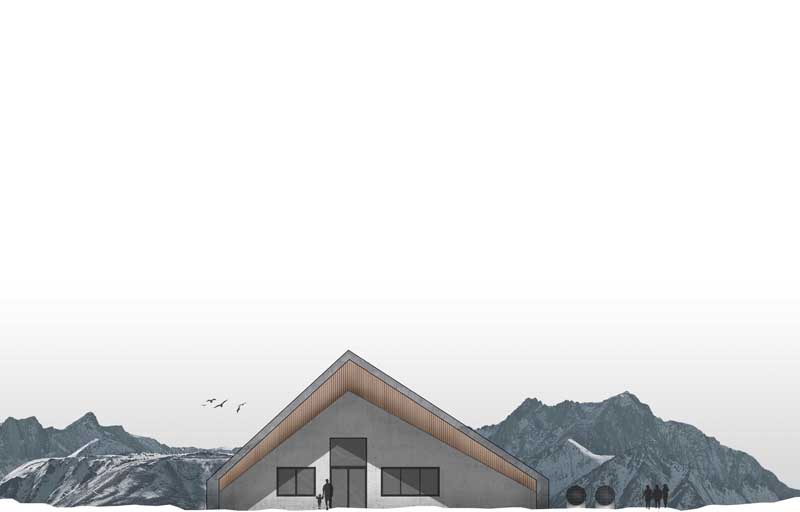

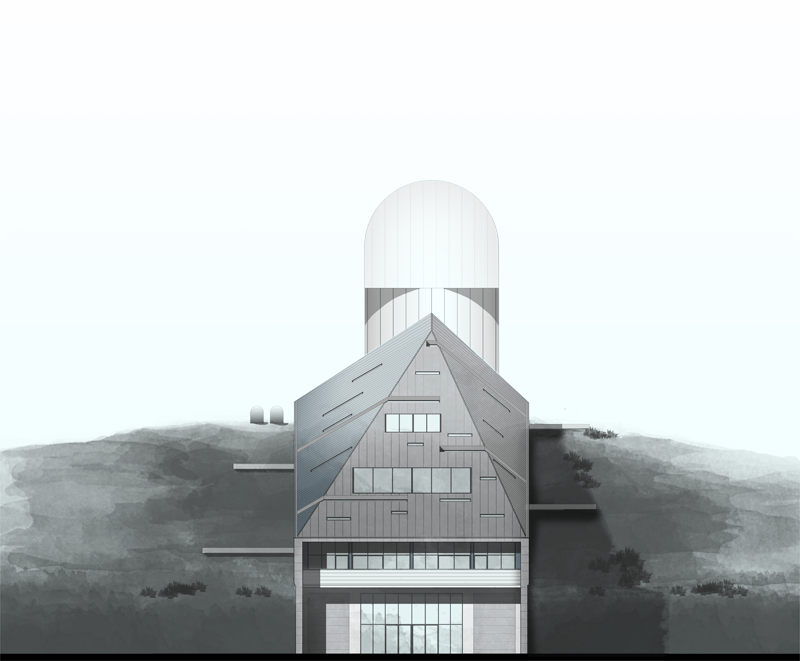



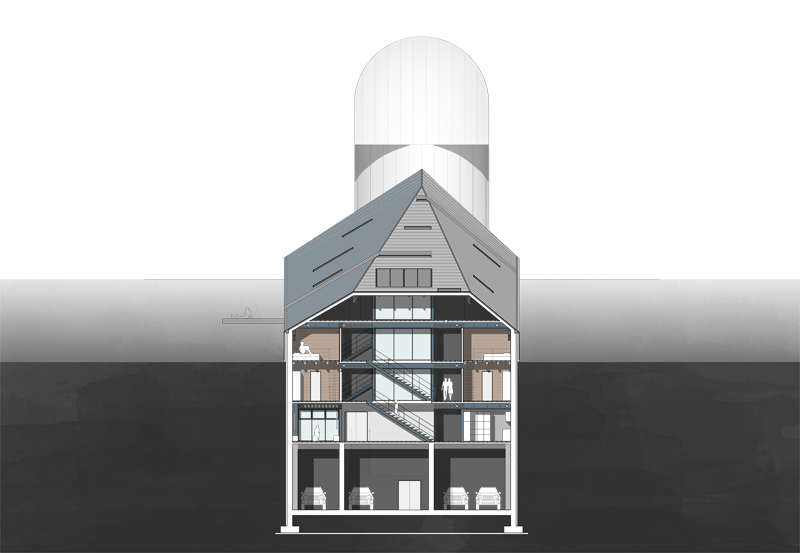

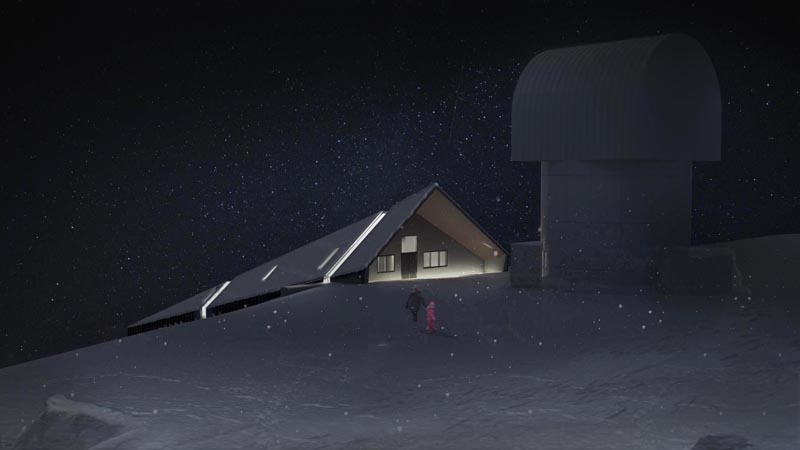

This diploma thesis deals with the proposal for the creation of a research, training and residence center in the Kalavryta region of the Peloponnese, and more specifically in Neraidorahi, the second highest peak of Mount Helmos, where today the largest telescope in the Balkans is placed , the telescope "Aristarchus". The present installation of the telescope has been the occasion for creating a scenario aiming at the interaction between researchers, astrophysics, academics, amateur astronomers and children, focusing on astronomy. We propose the creation of a building-shell, placed underground in its largest part, with a main element of a prismoid roof with openings and semi-open spaces, spots for astrological observation and contemplation of the night sky. We aim to resident researchers who work annually on the Aristarchus Telescope, the external telescope visitors, the various astronomy clubs and schools, as well as children from all levels of education who visit the area and facilities during school excursions in order to learn about astronomy and observe the night sky. An important factor in the designing of the building is the extreme weather conditions of the area, the difficult access and the intense slope of the soil. At the same time, we are working on a multidisciplinary planning approach, in collaboration with the researchers of the Athens Observatory and the National Center for Research in Natural Sciences "Demokritos", to study in depth both the needs of the users of the area and to collect climatic data from valid sources.
Supervisors: Stylidis Iordanis, Philippitzis Dimitris
Reference Number: 664




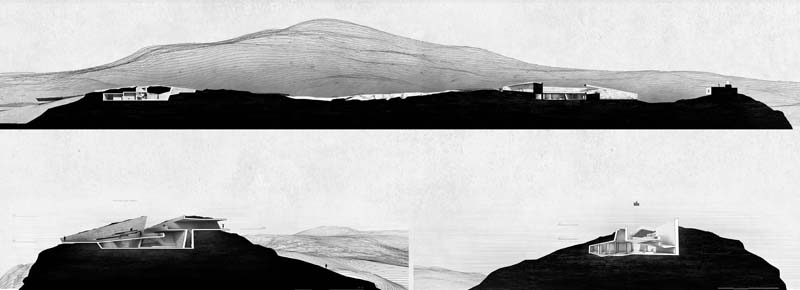



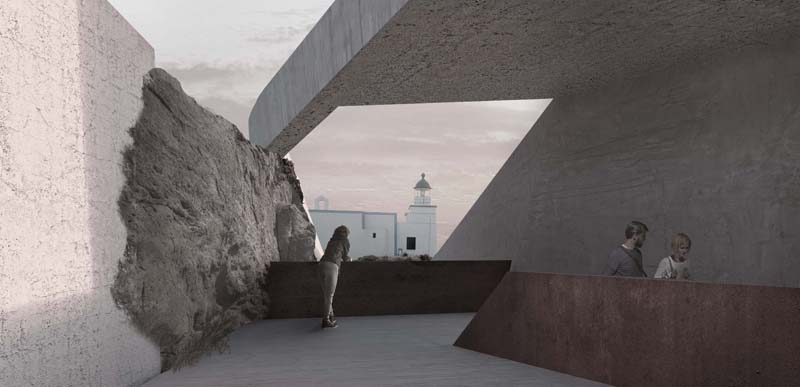



Nature when undisturbed throughout time will reclaim anything built by humanity...Inspired by shipwrecks and under the influence of this relationship, this thesis attempts to outline the relationship, the dependence but also the denial of anthropogenic elements to harmonize with nature without disrupting it.
The location taken into regard is in Kea, also known as Tzia, an earthly paradise of diving and hiking tourism. On its seabed lie the remains of the antecedently magnificent ships HMHS Britannic and SS Burdigala. The placement point is the peninsula which accommodates the first-ever operated lighthouse in Cyclades and it is in direct contact with the surface above the approximate locations of the two shipwrecks. The installation was created around a path which is formed by the vectors pointing from the locations of the shipwrecks towards the lighthouse in an attempt to highlight it and transfuse an optimistic perception.
A path, an experience, a project which expresses nature’s effort to consort with man-made elements and the resulting contrast through the excavated structures, inspired by the ships and their ending (σκάφος< ancient greek for vessel < σκάπτω[dig]). Following their form (ναυς< άγνυμι< break, crumble, break into pieces) through the dispersion of structures and their connection by the path’s route in an attempt to harmonize in an unusual environment and to build up intensity, create new uses within it and a different perception regarding what surrounds it and what it contains.
Natural characteristics that dominate the area, being calm on the south side and intense on the north side, transform spaces by the changing conditions of the sea, the wind and natural light placing them in a continuous conversation with each other.
Supervisor: Manolidis Kostas
Reference Number: 682






.jpg)
.jpg)
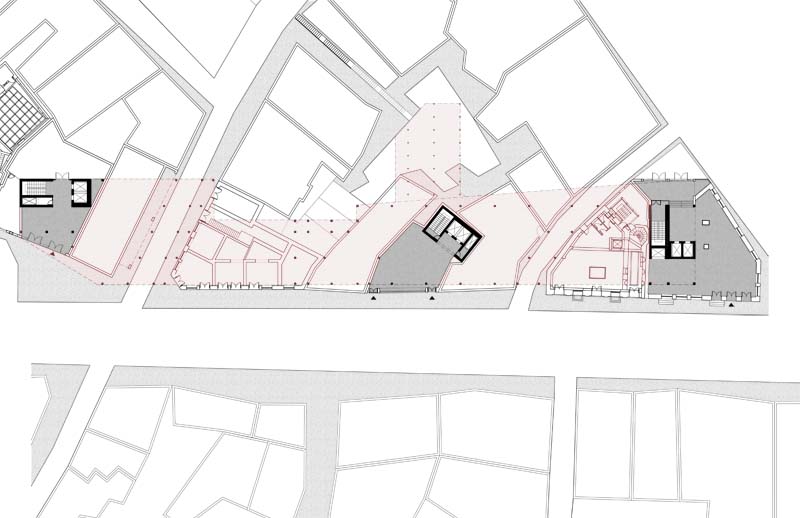

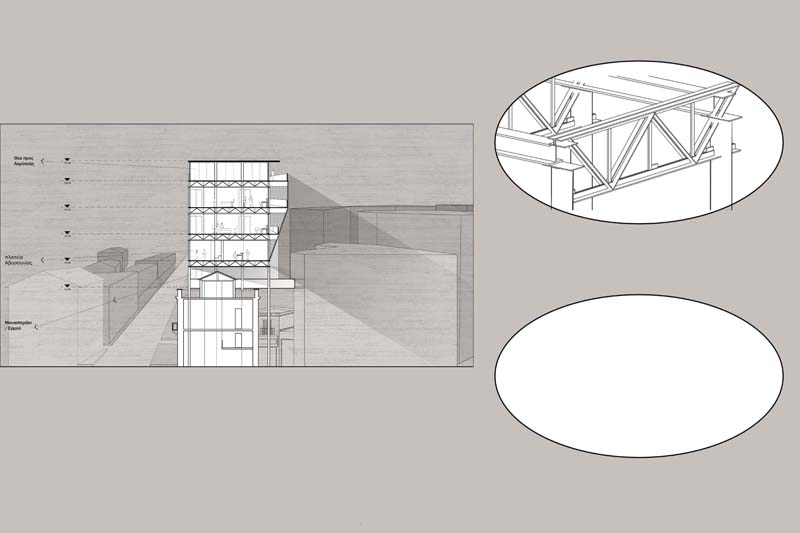

Athens, a modern European capital that seeks to be an upgraded and competitive city. However, a simple walk in the center is enough to realise the intense degradation and decline in the city's buildings. The center of Athens today is characterised by this situation in the building facilities in combination with the large number of objects without use and the scaffolding that is often found to cover the facades of building shells. Elements that refer to memory mechanisms and waiting states that may lead to total memory loss. Not only dilapidated and abandoned buildings, but also resigned and perhaps for some people objects with no use in the streets of the center, are recognized as memory bodies. Objects such as furniture, household appliances, personal belongings, hygiene items that left private use and turn into the public sphere, perhaps looking for a new form of use. The new form of use is often given through the city's antique shops. This projects is interested into the antique shops’ area influenced by the desire to maintain these public activities and the area hosting them.
Antique shops concerns an old job or occupation that deals with items that have lost their original use or their original user - whom they have been left either by choice or due to specific circumstances - and are looking for a new user who either needs them because of their function or collects them due to their age or other values they recognize on them. The antique shops in the center of the city are located together in Monastiraki, with the center the Avissynia square or the Athenian Yousourum. The evaluation and maintenance of the objects that the antique dealers work with requires great experience and much knowledge. For decades, these stores have offered in their own way to the commercial activities of the city, either by covering the needs of the citizens or by satisfying the interests of the buyers and collectors of the antiques. Unfortunately, this sector is currently experiencing severe survival problems that have led to the closure of a large number of shops. The financial crisis, hypermarkets and illegal street dealers are the main causes of these problems. The antique dealers proffesionals are afraid that illegal vendors exploiting the premises around their shops not only reduce their turnover but also lead to a change in the nature of the activities and as a result of the era.
AIR HUB visualise a huge workshop, with old craftsmen and young professionals in Aveissia Square, embracing the proffessions and uses the volume of their works have been decreased, stimulate the area of antique shops making it a thematic center. It aims to combine the past and the present, in the awakening of the consciousness of urban culture, in saving a historical employment by enhancing it against the economic crisis and in general improvement of the business, administrative and touristic center. These uses are housed in a metallic structure of 106 x 12 meters, which is connected to three existing buildings, one of which concerns a restored building. The connection of the new structure with the existing buildings is made through the staircases, using the existing shells as entrances for access to the new shell, while the basic elements used in the new construction are the metal structure, the solid concrete walls and the transparency through the openings and the metal mesh.
Supervisor: Papadopoulos Spiros
Reference Number: 704


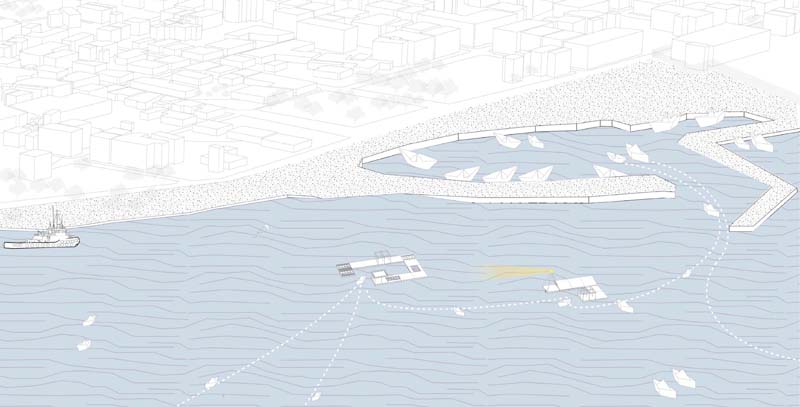



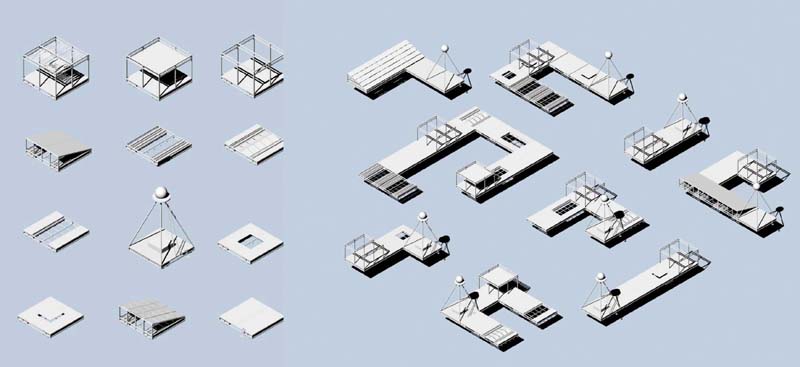

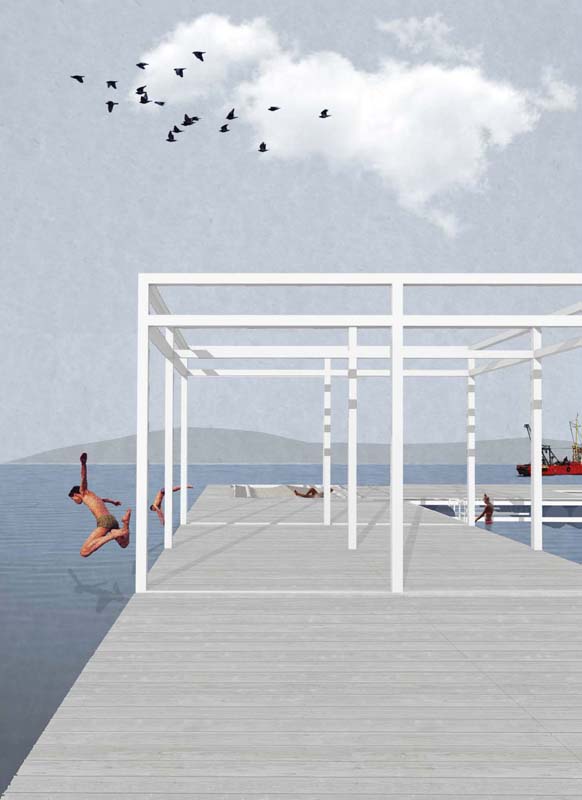



How can we treat the sea as a new topography? This master thesis, through the exploration of the current state of the Gulf of Elefsis, attempts, through hypotheses, appeals and actions, to reactivate part of the total activity and productivity of the area of the gulf, through the installation of multiple structures on the sea. These are intended to make the inhabitants return to the previously harmful marine environment of the area, and to exploit the sea for their benefit through alternative ways of producing food, energy and tourism. These structures were designed with the logic of the module, that is multiplied in order to be variable in use and also to receive different artificial grounds, depending on the area's need. They are located either at locations where many kinds of problems are encountered in an attempt to overturn them, either at historical, architectural and naval points of interest, or near areas which will probably be affected from rising sea levels in the years to come. The overall approach focuses on the user's immediate contact with water during his stay at the artificial ground, in order to confront the strong enforcement that water creates when it encircles an urban use from all its’ sides and separates it from the steady land.
Supervisor: Kotionis Zissis
Reference Number: 683

